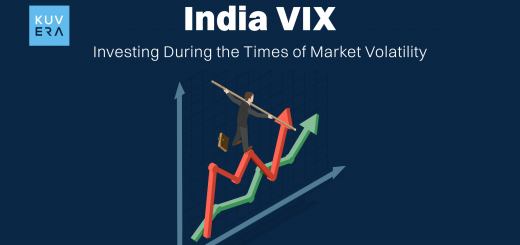Conceptually, you own a part of a company by buying its shares. With this, you are entitled to receive a part of their profits too. There are different dates related to this dividend and its distribution.
Let us learn about ex date, record date and ex date vs record date below.
What is Dividend?
Dividends are a portion of a company’s earnings that are distributed to its shareholders as a reward for their investment. Typically paid out in cash or additional shares, dividends serve as a way for companies to share profits with their investors. They can be a vital aspect of an investor’s total return, particularly for those seeking income from their investments.
Dividends are usually declared on a regular basis such as quarterly or annually and can vary based on the company’s financial performance and strategic decisions. Investors often look for companies with a strong history of dividend payments as an indicator of financial health and stability. Understanding dividends is essential for anyone looking to build a robust investment portfolio, as they can impact both investment strategy and overall returns. They are typically announced during a company’s board meeting or earnings reports allowing investors to plan accordingly. When a company declares a dividend, several important dates are associated with the dividend process.
Do you have financial goals? Set SMART goals and invest for them through Kuvera.
1. Declaration Date
It is the date on which a company’s board of directors announces the dividend. This announcement includes key details such as the amount of the dividend, the record date, and the payment date. Once the dividend is declared, the company is legally obligated to pay it.
2. Ex-Dividend Date
- Definition: It is the date on which the stock starts trading without the value of the next dividend payment. If the stock is bought on or after this date, the upcoming dividend is not received.
- Timing: The ex-dividend date is typically set 1 business day before the record date.
- Impact on Stock Price: On this date, the stock price often drops by approximately the amount of the dividend being paid, reflecting the fact that new buyers will not receive the dividend.
- Trading Strategy: Investors seeking dividends must purchase shares before the ex-dividend date to be eligible for the payment. Those looking to capture a dividend may sell the stock shortly after the ex-dividend date, capitalizing on price movements.
3. Record Date
- Definition: This date marks the official cutoff for determining which shareholders are eligible to receive the dividend. Only those who are on the company’s books as shareholders by the close of business on this date will receive the dividend.
- Timing: The record date is established by the company and is usually 2 business days after the ex-dividend date. This allows time for trades executed before the ex-dividend date to be processed and recorded.
- Administrative Function: This is primarily an administrative date used to compile a list of shareholders entitled to the dividend. It does not directly affect trading.
- No Trading Impact: There is no immediate trading impact on the record date as investors already know their eligibility based on the ex-dividend date.
4. Payment Date
It is the date on which the dividend is actually paid out to shareholders who are eligible to receive it. This is typically a few weeks after the record date, allowing the company time to process payments.
Start investing in Index Funds.
Understanding the Concept Via Example
Let’s understand the key dividend dates and their impact using a real-life example of a dividend announcement from Reliance Industries Limited (RIL), one of India’s largest companies which illustrates how the timeline for dividend announcements works in practice, helping understand when to buy shares to qualify for dividends.
1. Declaration Date
- Date: March 18, 2023
- On this date, Reliance’s board of directors declared a dividend of ₹8 per share during their board meeting, along with their quarterly earnings report.
2. Ex-Dividend Date
- Date: March 29, 2023
- If shares of Reliance are bought on or after this date, you will not be entitled to the ₹8 dividend.
3. Record Date
- Date: March 30, 2023
- Only those who are recorded as shareholders by the end of March 30, 2023 will receive the dividend payment.
4. Payment Date
- Date: April 15, 2023
- This is the date when Reliance actually paid the dividend amounts to shareholders’ accounts.
Implications for Investors
- The investors who purchased Reliance shares on or before March 28, 2023 would be eligible to receive the ₹8 dividend.
- Buying shares on March 29, 2023 or later means this particular dividend is missed out.
Importance of Knowing Different Dates of Dividends
Understanding these dates is crucial for investors who want to strategize around dividend payments, whether they are looking to receive dividends or avoid buying stocks just before the ex-dividend date to sidestep short-term price drops.
1. Investment Strategy
Investors often use dividends as part of their investment strategy. By knowing when dividends are declared and paid, investors can plan their purchases or sales to maximize returns. For instance, some investors may buy shares before the ex-dividend date to qualify for the dividend, while others may sell after receiving it.
2. Cash Flow Planning
For income-focused investors, knowing the payment date is important for cash flow management. It allows them to anticipate when they will receive dividend payments, which can be crucial for budgeting and planning expenses.
3. Tax Considerations
Dividends may be taxed differently depending on the holding period and other factors. Being aware of the timing of dividends can help investors understand potential tax implications and strategize their tax planning accordingly.
4. Portfolio Management
Investors often track dividends as part of their portfolio management strategy. It allows them to monitor income generation from their investments and make adjustments as needed.
5. Market Signals
Dividend announcements and timing can provide insights into a company’s financial health. Consistent or increasing dividends may indicate a strong, stable company while cuts or omissions may raise red flags. Investors who track these dates can better assess the underlying companies in their portfolios.
Learn about more such concepts with the help of blogs. Check here.
Wrapping Up
In summary, knowledge of the declaration date, ex-dividend date, record date, and payment date is vital for making informed investment decisions, optimizing cash flows, managing tax implications and understanding stock price movements. It empowers investors to align their strategies with their financial goals and market conditions effectively.
Interested in how we think about the markets?
Read more: Zen And The Art Of Investing
Watch here: Is UPI Killing the Toffee Business?












